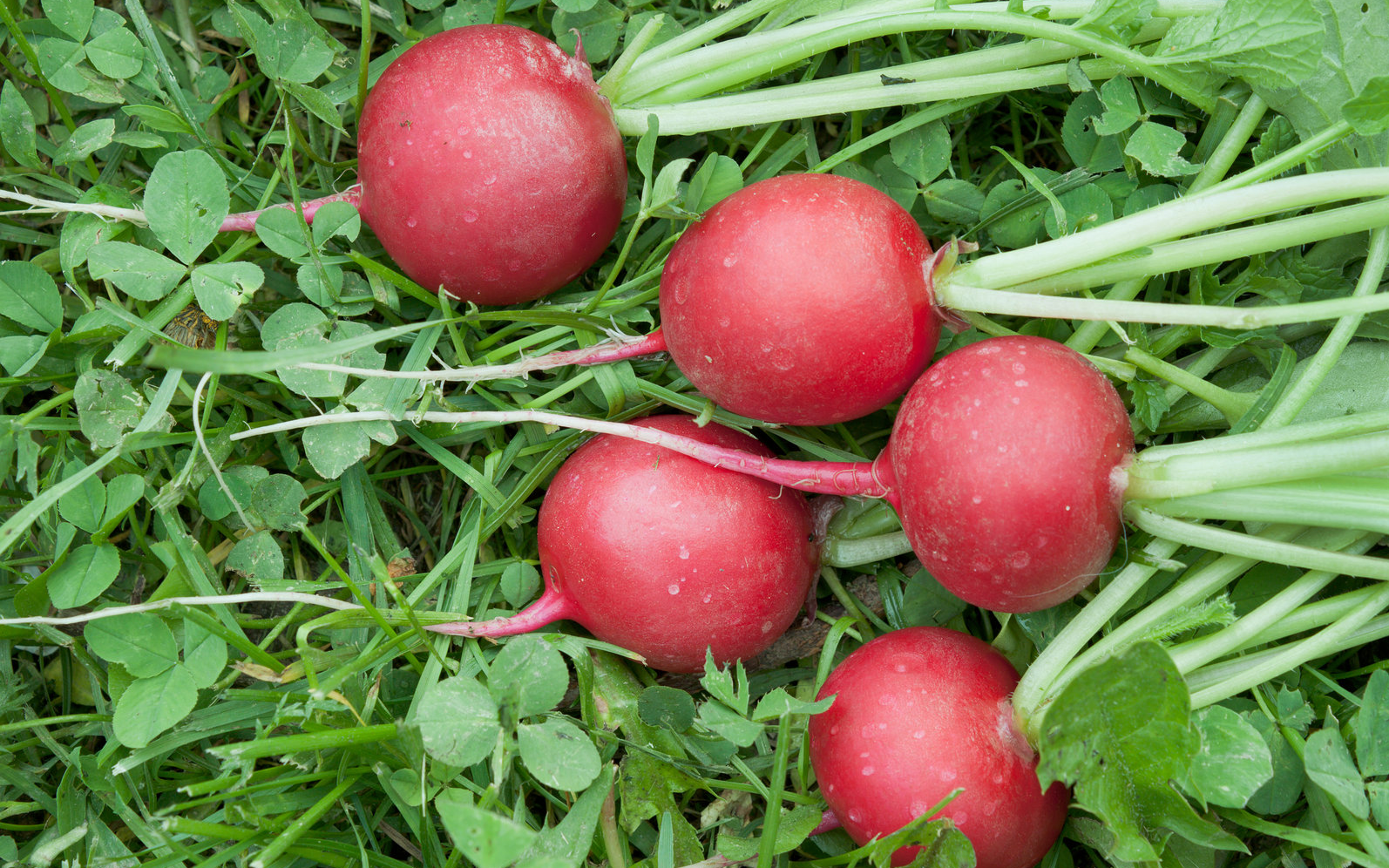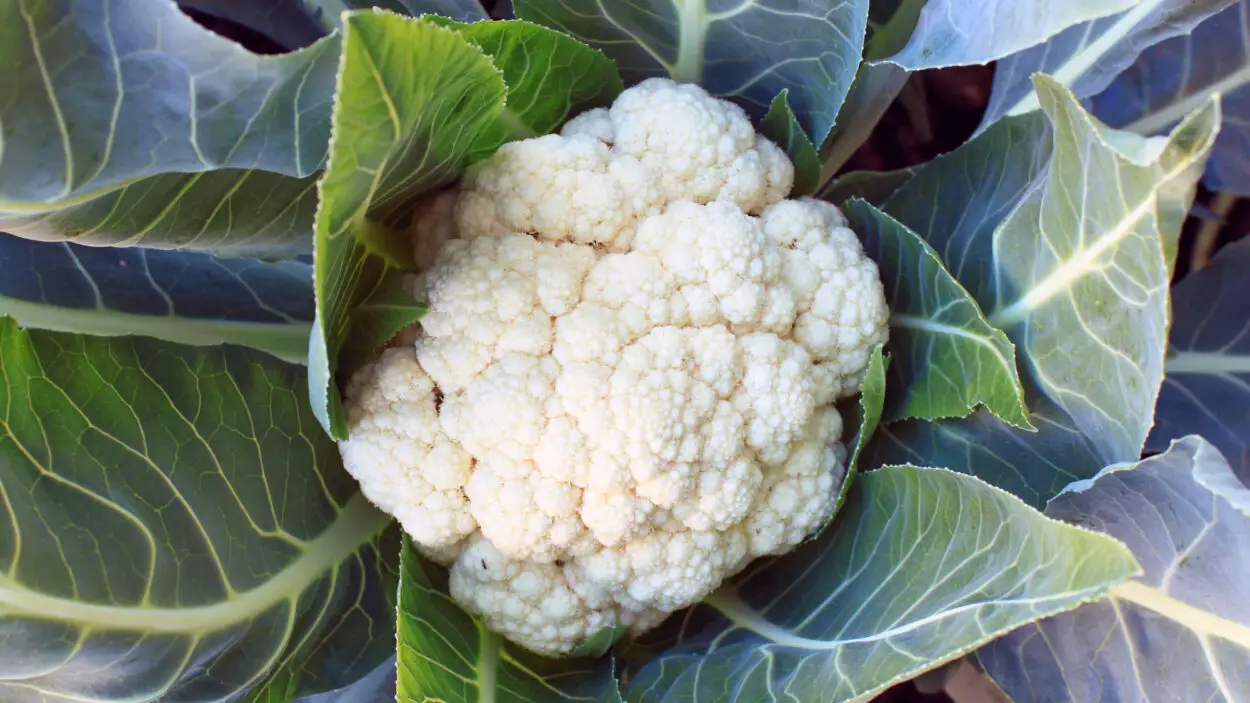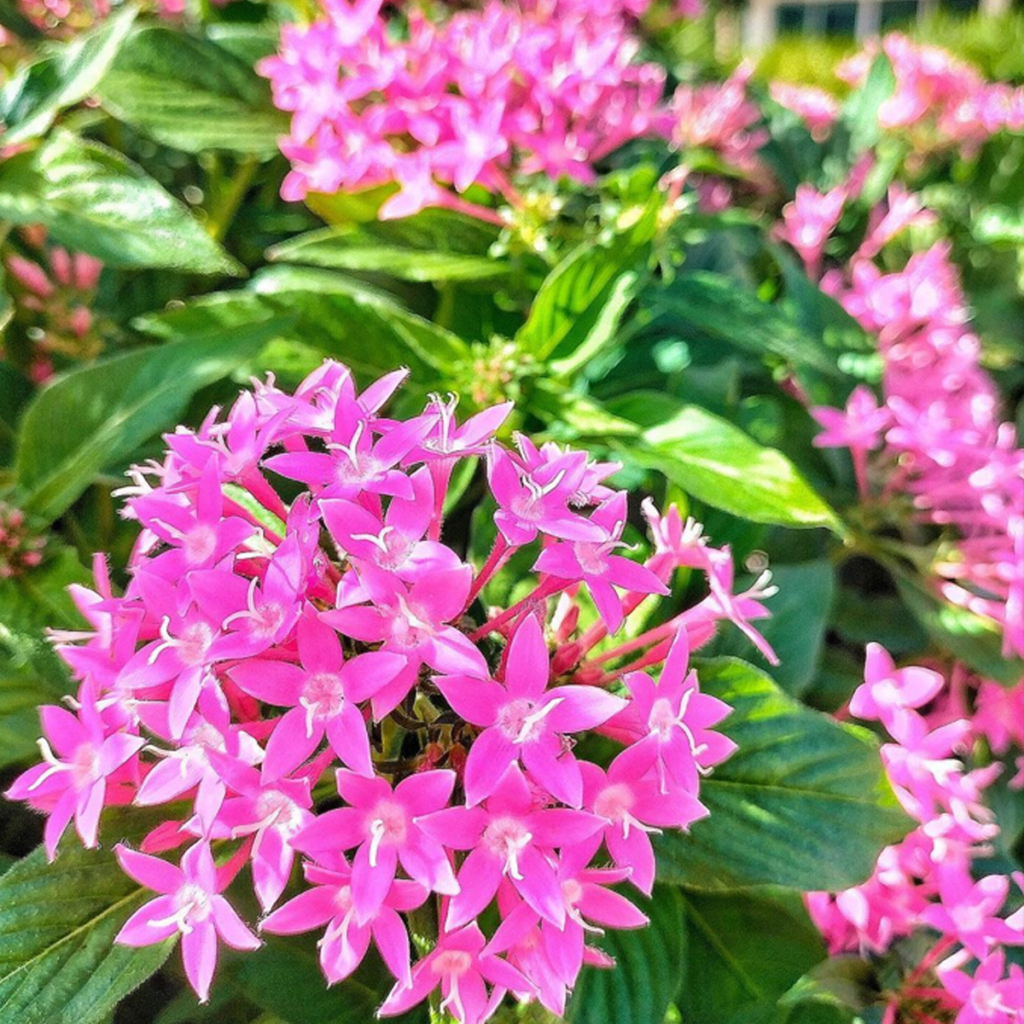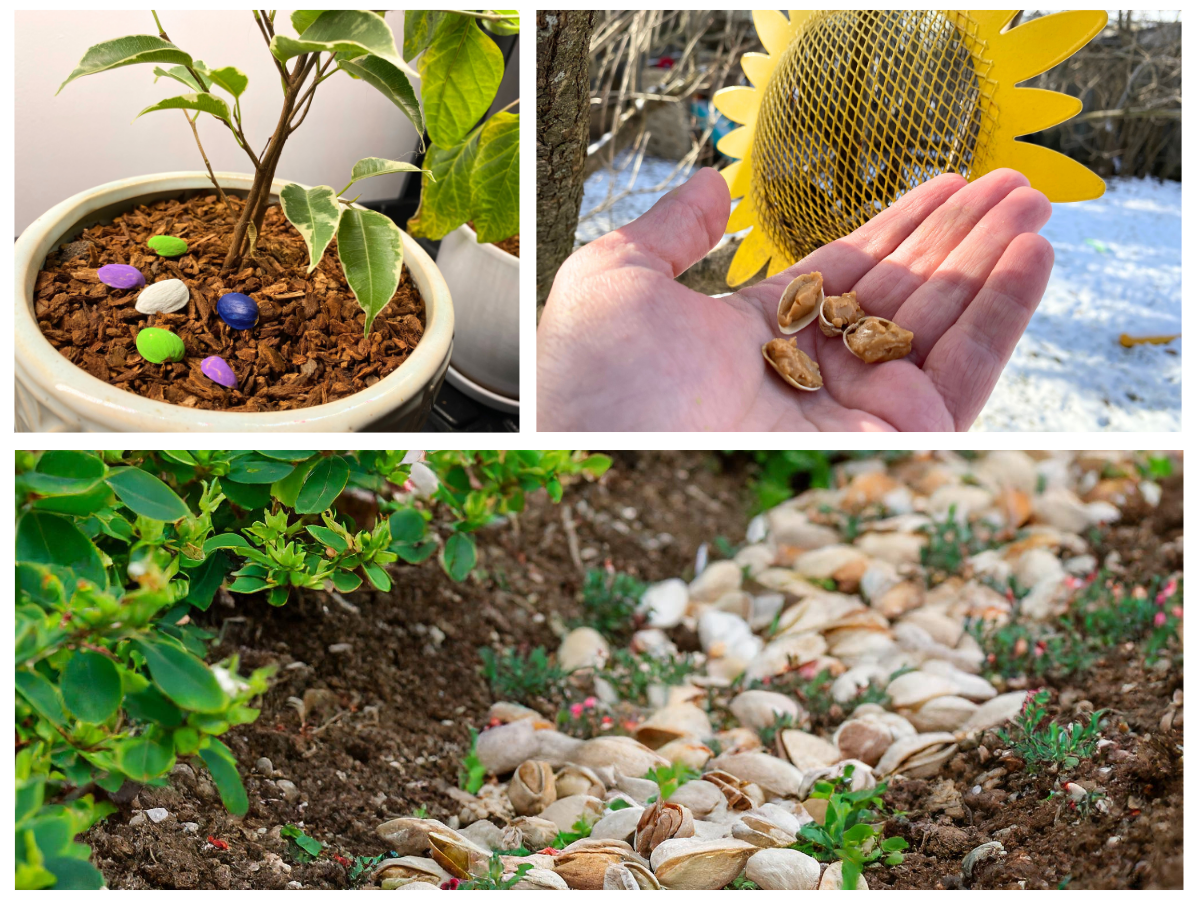12 Plants That Look Like Poison Ivy

The old saying goes, “leaves of three, let it be.” But what happens when those leaves of three aren’t poison ivy?

Believe it or not, many plants closely resemble poison ivy; it can be difficult to tell them apart. In this post, I’ll look at plants that look like poison ivy, so you can stay safe while exploring the great outdoors.
1. Fragrant Sumac (Rhus aromatica)

The Fragrant Sumac is a plant that will delight your senses with its aromatic fragrance. Its leaves emit a spicy scent reminiscent of citrus and cinnamon, which can be enjoyed from afar.
This hardy shrub also produces clusters of bright red berries in the fall, adding a pop of color to your garden.
| Botanical Name: | Rhus aromatica |
| Growth Rate: | Medium |
| Native Range: | Eastern North America |
| Hardiness Zones: | 3-9 |
| Exposure: | Full sun |
| Soil Needs: | Well-drained soil |
| Tolerate: | Drought, erosion |
| Dangers: | None known |
| Differences in Appearance to Poison Ivy | It has leaves divided into three leaflets that are broader, slightly fuzzy, and turn reddish-orange in the fall, with small red hairy berries. In contrast, Poison Ivy has smooth-edged, pointed leaflets and small white berries that can cause a poisonous reaction. |
| Water Needs: | Low |
2. Virginia Creeper (Parthenocissus quinquefolia)

The Virginia Creeper is a fast-growing vine often found climbing up the sides of houses and trees.
Its five-fingered leaves turn a brilliant shade of red in the fall, creating a lovely display. This versatile plant is also known for attracting wildlife, making it a popular choice for nature lovers.
| Botanical Name: | Parthenocissus quinquefolia |
| Growth Rate: | Fast |
| Native Range: | Eastern and Central North America |
| Hardiness Zones: | 3-9 |
| Exposure: | Full sun |
| Soil Needs: | Well-drained soil |
| Tolerate: | Shade |
| Dangers: | Skin irritation for some people |
| Differences in Appearance to Poison Ivy | Five toothed leaflets, whereas Poison Ivy has three smooth-edged and pointed leaflets. Virginia Creeper also typically has a more vibrant and uniform green color, while Poison Ivy may have variations in color and texture. |
| Water Needs: | Medium |
3. Jack-in-the-pulpit (Arisaema triphyllum)

The Jack-in-the-pulpit is a unique plant that looks like something straight out of a fairy tale. Its distinctive flowers are hooded and striped, resembling a tiny preacher standing in a pulpit.
This woodland plant is also a favorite of pollinators, attracting bees, butterflies, and other insects with its nectar.
| Botanical Name: | Arisaema triphyllum |
| Growth Rate: | Slow |
| Native Range: | Eastern North America |
| Hardiness Zones: | 4-9 |
| Exposure: | Part shade |
| Soil Needs: | Rich, moist soil |
| Tolerate: | Deer |
| Dangers: | All parts toxic |
| Differences in Appearance to Poison Ivy | Unlike Poison Ivy’s smooth-edged, pointed leaflets, it has three-parted, lobed leaves and a distinctive flower spike. |
| Water Needs: | High |
4. Boston ivy (Parthenocissus tricuspidata)

The Boston Ivy is a hardy vine often used to cover walls and other structures.
Its leaves turn a striking red in the fall, making it a popular choice for adding color to buildings. This plant is also low-maintenance and easy to care for, making it a great choice for busy gardeners.
| Botanical Name: | Parthenocissus tricuspidata |
| Growth Rate: | Fast |
| Native Range: | Eastern Asia |
| Hardiness Zones: | 4-8 |
| Exposure: | Full sun |
| Soil Needs: | Well-drained soil |
| Tolerate: | Salt, pollution |
| Dangers: | None known |
| Differences in Appearance to Poison Ivy | Three-lobed leaves with a glossy texture and adhesive pads, different from Poison Ivy’s smooth-edged, pointed leaflets. |
| Water Needs: | Medium |
5. Wild Strawberry (Fragaria vesca)

The Wild Strawberry is a charming little plant that produces sweet, juicy fruit. Its delicate white flowers give way to small, flavorful berries that humans and wildlife enjoy.
This ground-covering plant is also low-maintenance and easy to grow, making it a great choice for beginning gardeners.
| Botanical Name: | Fragaria vesca |
| Growth Rate: | Slow |
| Native Range: | Northern Hemisphere |
| Hardiness Zones: | 3-10 |
| Exposure: | Full sun |
| Soil Needs: | Well-drained soil |
| Tolerate: | Drought |
| Dangers: | None known |
| Differences in Appearance to Poison Ivy | Three-parted, toothed leaves and white flowers with yellow centers, in contrast to Poison Ivy’s smooth-edged, pointed leaflets and clusters of small white berries. |
| Water Needs: | Medium |
6. Bushkiller Vine (Cayratia japonica)

The Bushkiller Vine is a fast-growing plant that can overtake other vegetation. Its heart-shaped leaves and delicate flowers make it attractive, but it can be invasive and harmful to other plants.
| Botanical Name: | Cayratia japonica |
| Growth Rate: | Fast |
| Native Range: | Eastern Asia |
| Hardiness Zones: | 6-9 |
| Exposure: | Full sun |
| Soil Needs: | Well-drained soil |
| Tolerate: | None known |
| Dangers: | All parts toxic |
| Differences in Appearance to Poison Ivy | Large, heart-shaped leaves and grape-like clusters of fruit, not similar to Poison Ivy’s smooth-edged, pointed leaflets. |
| Water Needs: | Medium |
7. Dewberry (Rubus caesius)

The Dewberry is a bramble that produces delicious, juicy berries. Its thorny branches and delicate white flowers make it an interesting addition to any garden and a favorite of pollinators.
This plant is also very low-maintenance, making it a great choice for those who want to enjoy fresh berries without much fuss.
| Botanical Name: | Rubus caesius |
| Growth Rate: | Medium to fast |
| Native Range: | Eastern North America |
| Hardiness Zones: | 5-9 |
| Exposure: | Full sun |
| Soil Needs: | Well-drained soil |
| Tolerate: | Drought |
| Dangers: | None known |
| Differences in Appearance to Poison Ivy | It has leaves with toothed edges and clusters of edible berries, unlike Poison Ivy’s smooth-edged, pointed leaflets and small white berries. |
| Water Needs: | High |
8. Box Elder (Acer negundo)

The Box Elder is a fast-growing tree often used for landscaping. Its delicate leaves turn a beautiful yellow in the fall, making it a great choice for adding color to your yard.
This tree is also tolerant of a wide range of soil types, making it a versatile addition to any landscape.
| Botanical Name: | Acer negundo |
| Growth Rate: | Fast |
| Native Range: | Eastern and Central North America |
| Hardiness Zones: | 2-9 |
| Exposure: | Full sun |
| Soil Needs: | Moist soil |
| Tolerate: | Drought, salt |
| Dangers: | None known |
| Differences in Appearance to Poison Ivy | It has leaves with three to five toothed leaflets, different from Poison Ivy’s smooth-edged, pointed leaflets. |
| Water Needs: | High |
9. Raspberry Bush (Rubus idaeus)

The Raspberry is a popular fruiting plant that produces delicious berries. Its thorny branches and delicate white flowers make it an attractive addition to any garden and a favorite of pollinators.
This plant is also easy to grow and care for, making it a great choice for beginners.
| Botanical Name: | Rubus idaeus |
| Growth Rate: | Moderate to fast-growing shrub |
| Native Range: | Europe, Northern Asia, North America |
| Hardiness Zones: | 3-9 |
| Exposure: | Full sun to partial shade |
| Soil Needs: | Well-drained, fertile soil with average moisture |
| Tolerate: | Deer, drought, and poor soil |
| Dangers: | None known |
| Differences in Appearance to Poison Ivy | It has leaves with toothed edges and clusters of edible berries, unlike Poison Ivy’s smooth-edged, pointed leaflets and small white berries. |
| Water Needs: | Regular watering, but drought-tolerant once established |
10. Common Jewelweed (Impatiens capensis)

Common Jewelweed is a plant often found growing near streams and other bodies of water. Its delicate orange flowers are a favorite of hummingbirds, and its sap relieves itching and other skin irritations.
This plant is also easy to grow and care for, making it a great choice for naturalizing areas near water sources. Jewelweed also has a tendency to grow near Poison Ivy so be sure to look twice when you see these spotted flowers, their not as innocent as they may seem.
| Botanical Name: | Impatiens capensis |
| Growth Rate: | Fast-growing herbaceous plant |
| Native Range: | Eastern North America |
| Hardiness Zones: | 3-9 |
| Exposure: | Partial to full shade |
| Soil Needs: | Moist, well-drained soil |
| Tolerate: | Wet soil, shade, and deer |
| Dangers: | None known |
| Differences in Appearance to Poison Ivy | Unlike Poison Ivy’s smooth-edged, pointed leaflets, it has leaves with jagged edges and distinctive trumpet-shaped flowers. |
| Water Needs: | Regular watering; prefers moist soil |
11. Evergreen Clematis (Clematis vitalba)

The Evergreen Clematis is a climbing vine that adds a touch of elegance to any garden. Its dark green leaves are evergreen, providing year-round interest, and its small white flowers bloom in the summer, attracting pollinators.
This plant is also low-maintenance, making it a great choice for busy gardeners who still want to enjoy a beautiful display.
| Botanical Name: | Clematis vitalba |
| Growth Rate: | Fast-growing vine |
| Native Range: | Europe, Western Asia, North Africa |
| Hardiness Zones: | 4-9 |
| Exposure: | Full sun to partial shade |
| Soil Needs: | Well-drained soil with average moisture |
| Tolerate: | Drought, poor soil, and deer |
| Dangers: | None known |
| Differences in Appearance to Poison Ivy | Unlike Poison Ivy’s smooth-edged, pointed leaflets, it has compound and evergreen leaves with a leathery texture. |
| Water Needs: | Regular watering, but drought-tolerant once established |
12. Hog-Peanut (Amphicarpaea bracteata)

The Hog Peanut is a unique plant that produces underground and above-ground seeds. Its delicate, vine-like stems can reach up to six feet long, making it a great choice for trellises or other structures.
This plant also produces small, edible nuts, which squirrels and wild turkeys enjoy. Its ability to thrive in various soil types makes it a versatile addition to any garden.
| Botanical Name: | Amphicarpaea bracteata |
| Growth Rate: | Fast-growing vine |
| Native Range: | Eastern North America |
| Hardiness Zones: | 4-8 |
| Exposure: | Full sun to partial shade |
| Soil Needs: | Well-drained soil with average moisture |
| Tolerate: | Drought, poor soil, and deer |
| Dangers: | None known |
| Differences in Appearance to Poison Ivy | Unlike Poison Ivy’s smooth-edged, pointed leaflets, it has leaves with three leaflets and edible legumes. |
| Water Needs: | Regular watering, but drought-tolerant once established |
Final Thoughts
So, there you have it – 12 plants that look like poison ivy.
It’s always a good idea to be cautious when you’re out in nature, but knowing what to look for can help put your mind at ease.
If you come into contact with poison ivy, wash the affected area thoroughly with soap and water and seek medical attention if necessary.
Happy exploring!




